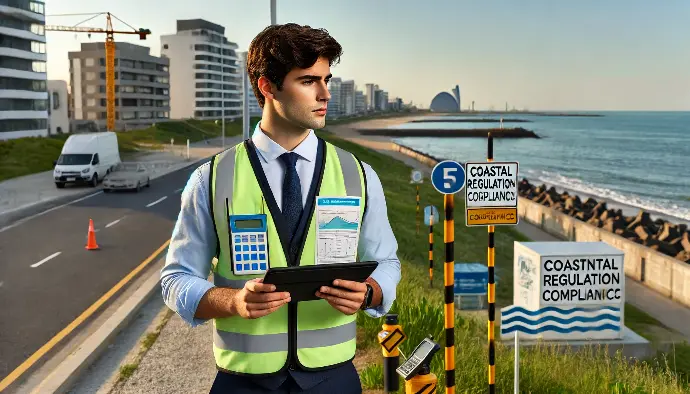Stakeholders
Stakeholders in the CRZ clearance process are crucial to ensuring the protection and sustainable development of coastal areas. They include various governmental bodies, project proponents, environmental groups, and local communities, each playing a vital role.
Key Stakeholders:
1. Ministry of Environment, Forest and Climate Change (MoEFCC):
- Role: The central authority responsible for formulating policies, issuing CRZ clearances, and ensuring adherence to environmental regulations.
- Significance: Ensures that development projects comply with national environmental standards to protect coastal ecosystems.
2. State Coastal Zone Management Authorities (SCZMAs):
- Role: State-level agencies that enforce CRZ regulations and monitor compliance within their jurisdictions.
- Significance: Provides localized oversight and ensures that state-specific coastal management strategies are implemented effectively.
3. Project Proponents:
- Role: Individuals or entities proposing and implementing projects within coastal areas.
- Significance: Responsible for obtaining CRZ clearance and adhering to all compliance requirements to minimize environmental impact.
4. Local Communities:
- Role: Residents and local organizations directly impacted by coastal projects.
- Significance: Their involvement ensures that development projects consider and mitigate potential negative impacts on local livelihoods and ecosystems.
5. Environmental NGOs and Activists:
- Role: Organizations and individuals advocating for sustainable environmental practices.
- Significance: Act as watchdogs to ensure that project proponents and authorities adhere to environmental norms and regulations.
Compliance Requirements
Compliance with CRZ regulations is mandatory for any project within designated coastal zones. These requirements are designed to safeguard coastal environments and promote sustainable development.
Key Compliance Requirements:
1. Environmental Impact Assessment (EIA):
- Requirement: Conduct an EIA to evaluate the potential environmental impacts of the project.
- Purpose: To identify and mitigate adverse environmental effects, ensuring sustainable project implementation.
2. CRZ Mapping:
- Requirement: Accurate mapping of the project site to identify its location within the CRZ categories (I, II, III, or IV).
- Purpose: To determine specific regulatory requirements and restrictions applicable to the project site.
3. Public Consultation:
- Requirement: Involve local communities and stakeholders through public hearings and consultations.
- Purpose: To incorporate local knowledge and address community concerns, enhancing project acceptance and minimizing conflicts.
4. Adherence to CRZ Notifications:
- Requirement: Comply with the guidelines and restrictions outlined in the latest CRZ notifications.
- Purpose: To ensure that projects align with current environmental regulations and policies.
5. Regular Reporting:
- Requirement: Submit periodic compliance reports to the relevant authorities.
- Purpose: To demonstrate ongoing adherence to CRZ clearance conditions and facilitate regulatory oversight.
How to Comply
Understanding how to comply with CRZ clearance requirements is crucial for project success. This section provides a step-by-step guide for project proponents.
Steps to Compliance:
1. Pre-Application Assessment:
- Action: Conduct a preliminary assessment to understand the CRZ classification of the project site.
- Outcome: Identify specific regulatory requirements and plan accordingly.
2. Prepare Necessary Documentation:
- Action: Gather all required documents, including EIA reports, CRZ maps, and stakeholder consultation records.
- Outcome: Ensure comprehensive documentation to support the CRZ clearance application.
3. Submit Application:
- Action: Submit the CRZ clearance application to the MoEFCC or SCZMA, along with all supporting documents.
- Outcome: Initiate the official review and approval process.
4. Engage in Public Consultation:
- Action: Organize public hearings to involve local communities and address their concerns.
- Outcome: Enhance project transparency and community support.
5. Follow-Up and Monitoring:
- Action: After receiving clearance, ensure continuous monitoring and adherence to the compliance conditions specified in the clearance letter.
- Outcome: Maintain compliance throughout the project lifecycle.
6. Regular Reporting:
- Action: Submit compliance reports as required, typically on an annual basis.
- Outcome: Provide ongoing documentation of compliance to regulatory authorities.
Time Limits and Due Dates
Timely compliance with CRZ regulations is essential to avoid penalties and project delays. Understanding the key time limits and due dates is crucial for project proponents.
Key Time Limits:
1. Application Submission:
- Timeline: Submit the CRZ clearance application well in advance to accommodate any required revisions or additional documentation.
- Significance: Allows sufficient time for the review process and ensures timely project commencement.
2. Public Consultation Period:
- Timeline: Typically lasts 30-45 days.
- Significance: Ensures adequate time for stakeholder engagement and feedback incorporation.
3. Clearance Processing Time:
- Timeline: The MoEFCC or SCZMA generally takes 60-90 days to process CRZ clearance applications.
- Significance: Provides a timeframe for project proponents to plan project activities post-clearance.
4. Compliance Reporting:
- Timeline: Submit annual compliance reports within the first quarter of the following year.
- Significance: Ensures continuous regulatory oversight and project accountability.
5. Project Completion:
- Timeline: Complete the project within the validity period of the CRZ clearance, typically five years from the date of issuance.
- Significance: Ensures that projects adhere to approved timelines and avoid the need for revalidation or extensions.
By understanding and adhering to these compliance requirements, stakeholders can ensure the successful implementation of their projects while protecting the coastal environment. For more detailed information on CRZ clearance and compliance, visit the official MoEFCC website or consult with an environmental expert.
FAQs
Coastal Regulation Zone (CRZ) clearance is a mandatory approval process
for projects located in India's coastal areas. It ensures that
developments comply with environmental regulations designed to protect
coastal ecosystems and promote sustainable development.
Any
individual or entity proposing a project within designated Coastal
Regulation Zones in India must obtain CRZ clearance. This includes
industrial, infrastructure, and residential projects within CRZ I, II,
III, and IV categories.
The
steps include conducting a pre-application assessment, preparing necessary
documentation such as Environmental Impact Assessment (EIA) reports and
CRZ maps, submitting the application to MoEFCC or SCZMA, engaging in
public consultations, and ensuring follow-up and monitoring after
clearance is granted.
Required documents include Environmental Impact Assessment (EIA) reports,
CRZ maps, project plans, public consultation records, and any additional
documentation specified by the Ministry of Environment, Forest and Climate
Change (MoEFCC) or State Coastal Zone Management Authorities (SCZMAs).
The
clearance process typically takes 60-90 days after submitting the complete
application. This timeframe includes the review period by MoEFCC or SCZMA
and the public consultation phase.
Post-clearance compliance requirements include adhering to the conditions
specified in the clearance letter, conducting regular environmental
monitoring, submitting annual compliance reports, and ensuring continuous
engagement with local communities and stakeholders.
Non-compliance with CRZ regulations can result in legal actions, project
delays, fines, or revocation of the CRZ clearance. It is crucial to adhere
to all stipulated conditions and regularly submit compliance reports.
Local
communities can participate through public consultations organized by
project proponents. These consultations provide a platform for residents
to express their concerns, offer suggestions, and ensure their interests
are considered in the project planning.
The
Environmental Impact Assessment (EIA) plays a crucial role in CRZ
clearance by evaluating the potential environmental impacts of the
proposed project. It helps identify mitigation measures and ensures that
the project adheres to environmental protection standards.
Detailed information about CRZ regulations, compliance requirements, and
the application process can be found on the official website of the
Ministry of Environment, Forest and Climate Change (MoEFCC) and respective
State Coastal Zone Management Authorities (SCZMAs). Consulting with
environmental experts can also provide valuable guidance.

